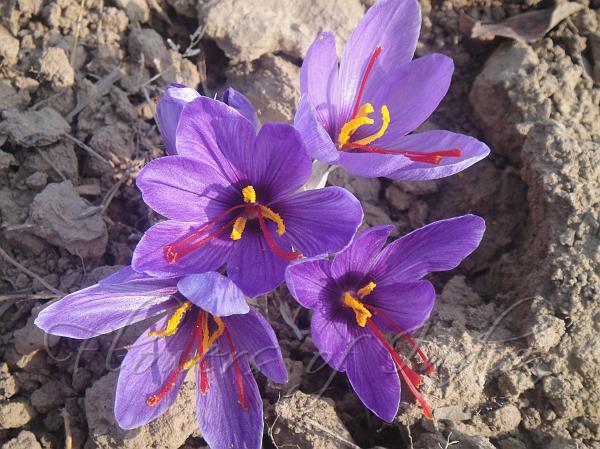|
| Saffron Flower |
|

|

| File size | 604425 |
| Original date | 10/26/11 10:05 AM |
| Resolution | 2048 x 1536 |
| Flash | Flash did not fire, auto |
| Focal length | 14.64mm |
| Exposure time | 1/200s |
| Aperture | 4.0 |
| Focus Distance | |
| Metering Mode | Multi-segment |
| Camera make | SONY |
| Camera model | DSC-T90 |
| Sensor type |
|
|
|
|
Photo: |
Botanical name: Crocus sativus Family: Iridaceae (Iris family)
Saffron Flower is a beautiful flower grown mostly in Kashmir in India.
Saffron, which has for decades been the world's most expensive spice by
weight, is native to Southwest Asia. It was first cultivated in
the vicinity of Greece. After a period of
hibernation in summer, five to eleven narrow and nearly vertical green
leaves, growing up to 40 cm in length, emerge from the ground. In autumn, purple
buds appear. Only in October, after most other flowering plants have released
their seeds, does it develop its brilliantly hued flowers, ranging from a
light pastel shade of lilac to a darker and more striated mauve. Upon
flowering, it averages less than 30 cm in height. Inside each flower is a
three-pronged style; in turn, each prong terminates with a crimson stigma
2.5-3 cm in length. These stigma are hand harvested , dried and used as the
famed saffron. Saffron was traditionally used in coloring the rice in biryani.
Saffron Flower is a fall-flowering perennial plant
unknown in the wild, and is sterile. Being sterile, the Saffron Flower's
purple flowers fail to produce viable seeds—thus, reproduction is dependent on
human assistance: the corms (underground bulb-like starch-storing organs) must
be manually dug up, broken apart, and replanted. A corm survives for only one
season, reproducing via division into up to ten "cormlets" that eventually
give rise to new plants. The corms are small brown globules up to 4.5 cm in
diameter and are shrouded in a dense mat of parallel fibers.
| Identification credit: Tabish | Photographed in Kashmir. |
• Is this flower misidentified? If yes,